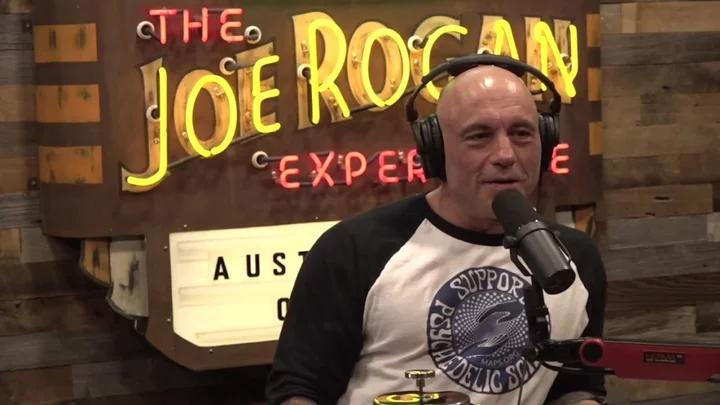Big Bird loomed large over a room at Manhattan Correctional Center, or at least a reasonable facsimile of him did. The bright yellow, feathered star of Sesame Street appeared in cut-out form on the wall of a space meant for children, who sat at tables working diligently on coloring books. Strewn around the room were toys, a television, puppets, and other kid-friendly activities. In place of the bare walls was pastel-colored paint.
The setting was incongruous for the building. Now known as MCC New York, it would later house infamous individuals like Bernie Madoff, drug lord “El Chapo,” and John Gotti.
But for its time, it was not unusual. Several correctional facilities created rooms just like it throughout the late 1970s to help kids feel comfortable while visiting incarcerated family members. Big Bird, Cookie Monster, and all the rest of the Sesame Street Muppets crew could now be found at an unlikely destination: a prison daycare program.
Prison Pals
The idea for a Sesame Street-themed daycare curriculum originated in 1974, when Mary Greene, Texas coordinator for the Children’s Television Workshop (now Sesame Workshop), happened to be visiting a federal prison and took notice of kids restlessly occupying a visiting area. As adults chatted with people who were incarcerated, the kids seemed bored, distracted, and prone to being a nuisance. It was a problem for incarcerated people who wanted to focus on spending time with loved ones, as well as for staff, who had to monitor them to make sure there wasn’t too much trouble.
Greene’s idea was to create a prison daycare that served two purposes. First, it would provide a dedicated space for kids using Sesame Street iconography to make them feel welcome in what they perceived to be a strange or harsh environment. Second, it could provide job opportunities for people who were incarcerated, as they could apply to become daycare staff and receive childcare training.
Greene and CTW partnered with Donald Deppe, the supervisor of education for the Federal Bureau of Prisons (BOP), who agreed to test the program at two Texas facilities in 1974. The daycare rooms were stocked with puppets, books, posters, and other Sesame Street miscellany. The workers played tapes of the show and then taught the kids using lesson plans related to the segments. Upwards of 50 children could be found in the daycare at any one time.
The program, which was dubbed the Sesame Street Parent-Child Center, was well-received; it soon expanded to six other states, including California, West Virginia, Wisconsin, and New York. The objective was to make prison visits not only tolerable but even potentially fun—though Joan Ganz Cooney, the co-creator of Sesame Street, bristled at that characterization when a journalist brought it up.
“Most of these children understand that this isn’t school,” she said in 1977. “They’ve been through traumatic experiences—the split-up of their homes, their fathers or mothers going away, then visiting them and having to leave that parent again. They know exactly what’s going on and it is not fun.”
Behind Bars
At first glance, the dynamics of the Sesame Street prison daycare invited an uncomfortable question: If incarcerated people were acting as counselors, how could they be trusted? Some, like a staffer at MCC New York, were convicted of white-collar crimes like stock fraud. But others, like Ben Cooper of Federal Correctional Institute in Lompoc, California, had convictions for bank robbery.
When the idea was first broached with the Bureau of Prisons, some officials felt that it was a recipe for trouble. Kids could be harmed, or even used to smuggle in contraband. But neither materialized—at least, not in Lompoc, where officials said no incidents had been reported as of 1978. Any incarcerated people with a history of abusing children were prohibited from the program. Other prisons mandated that prospective workers must not have made any escape attempts and should have a clean prison record. Prison staffers monitored interactions.
But there was surprising leniency for other offenses. At Kirkland Correctional Institution in Columbia, South Carolina, the program director was Carnell Baker, a person serving 35 years for murder and armed robbery. Kendrick Davis, nicknamed “Snake,” was also a tutor serving time for murder.
“I like kids and they like me,” Baker said in 1979. “We feel needed. And in a prison atmosphere, that’s important.”
At Kirkland, a typical daycare session might involve an incarcerated person leading a sing-along on a guitar, followed by drawing, crossword puzzles, screening an episode of Sesame Street, and a puppet show. Workers planned the schedule days in advance; needed items were paid for in part with confiscated contraband money. (The program was funded by CTW for two years before the Bureau of Prisons took over financial responsibility.) One mother observed her child was getting better at counting and knew her alphabet more since attending the daycare on weekends. Her father was serving a life sentence for burglary.
Dick Cassell, who oversaw the program for the Bureau, said that incarcerated people were doing more than passing time. They were acquiring skills that might reduce recidivism once they were released. “The inmates learn a lot about themselves and someone else through the program,” he said. “I think the program is one of the most effective ways to keep people from returning to prison because of the strong family ties it helps build.”
It’s hard to know exactly when the Sesame Street prison program began to trail off. In 1983, The News and Observer profiled the North Carolina Correctional Center for Women, where a person serving a life sentence dressed as Big Bird for visitors. At that time, the paper estimated 30 prisons were still participating. Another paper that year put the number at 49. In 1988, the program was mentioned as being active at Connecticut Correctional Institution at Somers, though it was framed as being sponsored by Families in Crisis, a local support group. The Sesame Street materials were used with permission from Connecticut arm of Children’s Television Workshop.
When Mental Floss recently reached out to Sesame Workshop for this story, they were unable to confirm when the program officially ended, and their site doesn’t provide additional details about the program, either. However, Sesame Workshop has continued to try and address the needs of children whose parents are incarcerated. In 2013, they introduced Alex, a Muppet whose father is in prison. Alex appeared in mobile apps and storybooks. The hope was that the character would resonate with kids going through a similar experience and help facilitate more inclusive and supportive conversations around it. Segments featuring Alex were also screened in federal and state prisons.
Today, the notion of a Sesame Street-adorned playroom in a federal prison staffed by people convicted of felonies would probably be met with a mixed reception. But Joan Ganz Cooney held a different view. Sesame Street was in prison, she once said, because that’s where the children were.
This article was originally published on www.mentalfloss.com as Jail Bird: When ‘Sesame Street’ Developed a Prison Daycare Program.









